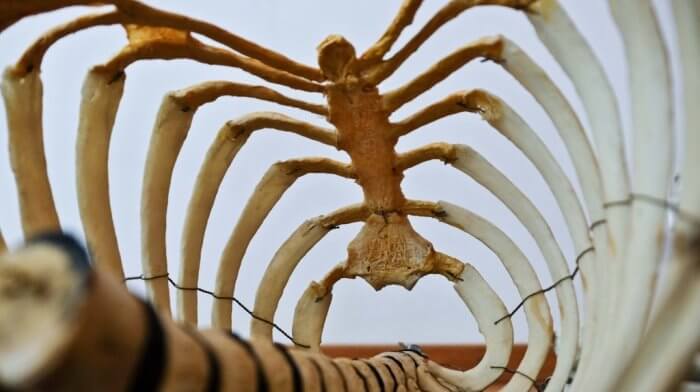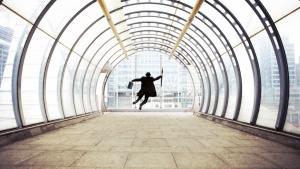Protecting your staff’s spinal health is about far more than just avoiding absence, says Dr Luther Moss.
Want To Boost Your Bottom Line? Make Sure You've Got Your Staff’s Back
Protecting your staff’s spinal health is about far more than just avoiding absence, says Dr Luther Moss.

Every year, around 10 million people in England and Scotland experience back pain. That’s about a sixth of the UK population. It’s also serious statistic for any business leader, since it’s proven that the UK loses some 31 million days and around £12.3 billion in productivity every year to staff absences caused by spinal discomfort.
But it’s not just about preserving your business’s bottom line. Research is starting to show that healthy spinal movement can actually stimulate neurological function, in turn boosting creativity, positivity and – crucially – productivity amongst staff.
In other words, helping employees to look after their backs can lead to direct improvements in innovation and performance. The business case for helping employees improve their spinal health is clear.
The key to all this lies in movement. With each movement we make, we generate a nerve impulse, which tells our bodies where we are in space. This is called proprioception, and studies have found links between this movement sense and our ability to concentrate, learn, read and write.
Research has also discovered new links within the brain that show that proprioception helps to regulate a whole host of neurological processes, including stress reduction, pleasure, happiness, thinking, learning, immune function, organ function, musculoskeletal function, and overall cell function. In other words, movement is the true super nutrient for your brain.
But with so many of us bound to our desks, immobility is, unsurprisingly, a major cause of back pain - a result of the deleterious effect it has on musculoskeletal tissue.
Our joints, especially the discs in our back, require movement to pump fluid in and out of tissue, removing toxins and supplying nutrition. But their blood supply is poor, which means they cannot rely on the heart to do this job for them.

Sitting for long periods puts enormous pressure on your lower back
Combine immobility with the amount of time we spend sitting down – especially in a slumped position – and the stress we place on our spine is radically increased. Spinal disc pressure when standing is already at 100% and poor posture when seated, especially for lengthy hours, can raise this to well over 150%.
Part of the problem is that people tend to put up with low-level back pain for long periods of time – your staff may well perceive spinal discomfort at work as somehow normal. But pain of any kind is often one of the last signals the body sends that something is wrong.
Often, by the time an employee is experiencing pain, their body has already made a huge attempt to compensate for the problem. This type of pain has numerous knock-on effects in day-to-day life, not least sleeping problems and a lack of regular exercise.
And, the longer it’s left, the harder it becomes to fix. Generally, if the ache or pain hasn’t resolved itself in the first two to four days then it needs further exploration and some significant damage has likely occurred.
The irony is that staff who are suffering are likely to be doing all the wrong things – if they’re doing anything at all. Two of the biggest back pain myths are that you should rest and apply heat.
More often than not, that couldn’t be further from the truth; keeping active and maintaining regular movement of the spine is essential for recovery, whilst heat only increases inflammation which is a key component of many spinal conditions.

For a better back, get moving
The good news is that there are a lot of simple, cost-effective things that businesses can do to help staff build more movement into their working day, without any negative impact on organisational efficiency.
For example:
· Get walking – encouraging staff to take a few small breaks – preferably a short walk – throughout the day can boost both physical and mental health.
· Get competitive – a little bit of healthy inter-office rivalry can work wonders for movement and morale. For instance, set up a competition to see who can rack up the most steps, encourage employees to train together for charity sporting events, or even make a team-building exercise out of it.
· Get creative – Some companies are breaking ground in this area, by offering in-house Pilates and Yoga classes at lunchtime, as well as free cookery courses and even on-site massage therapists.
· Consider investing in standing desks – More people are using these to help them change position and reduce spinal stress. They don’t have to cost the earth – you can even buy conversions that sit on top of an existing desk. Staff should build up the amount of time they work standing up while they get accustomed to the new positioning, though.
· Invest in a wellness day – ask a trained health professional, such as a chiropractor, to come to your office to offer impartial advice. They can also advise employees on existing benefits within health insurance policies, many of which include some treatment for back pain. Clinics are often happy to do this free of charge and may even be willing to conduct short phone consultations with employees to answer any questions.
As business owners, it can feel counterintuitive to encourage people to stop working and start moving. In fact, far from being a ‘soft’ approach or encouraging inefficiency, a work policy that actively pays attention to the health of your employees’ spines is likely to increase, rather than decrease, your business returns. That’s got to be good for your staff, customers and, ultimately, your bottom line.
Luther’s top spinal movement tip:
If you only do one back stretching exercise, make it the wall angel. This is my favourite way to remove stress from the spine at the end of the day.
Dr Luther Moss DC, MChiro, PgCert, MCC is founder and lead chiropractor at ML Chiropractic.
Thanks for signing up to Minutehack alerts.
Brilliant editorials heading your way soon.
Okay, Thanks!

